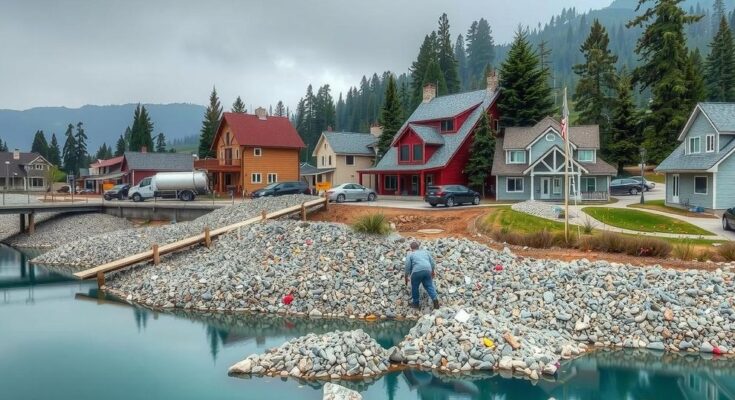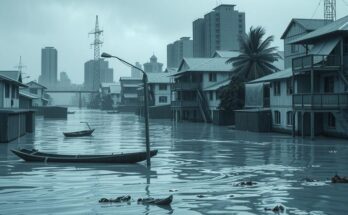The 2020 Stanley, Idaho earthquake prompted extensive research on the Sawtooth fault, revealing its complexity and confirming tectonic activity in the region. Despite challenges posed by the pandemic, significant findings on fault behavior, aftershock patterns, and the geological history of the area have emerged. Ongoing investigations will further clarify the dynamics of this fault system, contributing to a greater understanding of earthquake risks in Idaho.
The 2020 Stanley earthquake in Idaho has catalyzed extensive research on the Sawtooth fault, revealing significant insights into its complex geological activity. Initially deemed an active yet understudied fault, the earthquake provided clear evidence of tectonic movement in the region. The event, which registered a magnitude of 6.5, led to a deeper understanding of fault behavior, aftershock patterns, and the geological history beneath the surface.
The March 31, 2020, earthquake, the second largest in Idaho’s history, was noted for its multifaceted fault mechanisms. While geologists initially attributed the quake to the Sawtooth normal fault, further investigation suggested a more intricate rupture involving multiple fault lines. Various models indicating distinct geometries highlight the complexity of the seismic event, contributing to ongoing discussions among experts.
In the aftermath of this seismic activity, scientists from various institutions, including the Idaho Geological Survey and the U.S. Geological Survey, deployed temporary seismometers to track aftershocks, which are still occurring, underscoring the long-term effects such earthquakes can produce. Three-dimensional mapping of aftershocks illustrates a north-trending fault that exhibits steep dips, adding to the evolving understanding of the seismic landscape.
Reservoirs of information were gathered post-earthquake, as many geological investigations encountered challenges due to the COVID-19 pandemic. Nonetheless, the absence of surface ruptures was noted, although significant ground liquefaction occurred near Stanley Lake, illustrating the quake’s influence on the environment. Loss of beach areas at the inlet delta and the formation of cracks and sand boils were notable impacts of this phenomenon.
The research undertaken has unveiled new maps of the Sawtooth fault, showcasing its discontinuous structure, comprising several strands rather than a single line. Paleoseismic trenching efforts revealed evidence of earthquakes dating as far back as 9,000 years, while sediment analysis from various lakes offered insights into significant seismic events over millennia.
Despite the advancements made in understanding the Sawtooth fault, numerous questions persist regarding its rupture history, the potential for large-scale failures, and interactions between different fault segments. Ongoing fieldwork and modeling endeavors by geologists signal a continuing commitment to unraveling the nuances of Idaho’s seismic character.
The discussion surrounding the 2020 Stanley earthquake is rooted in its significant implications for understanding earthquake mechanics on the Sawtooth fault in Idaho. Historically recognized as an active fault, the area had not undergone extensive study until this seismic event transpired, prompting intensified research efforts. The Stanley earthquake not only reaffirmed the tectonic activity prevalent in the region but also explored the consequences of these seismic events on local geography and the natural environment.
In conclusion, the 2020 Stanley earthquake has proven to be a pivotal event for geological research focused on the Sawtooth fault. It has unveiled new complexities in fault behavior, contributed to the understanding of seismic activity in Idaho, and encouraged further studies into the region’s seismic history. As researchers continue to investigate, we can expect ongoing developments in seismic science that will enhance safety and preparedness in earthquake-prone areas.
Original Source: idahocapitalsun.com




